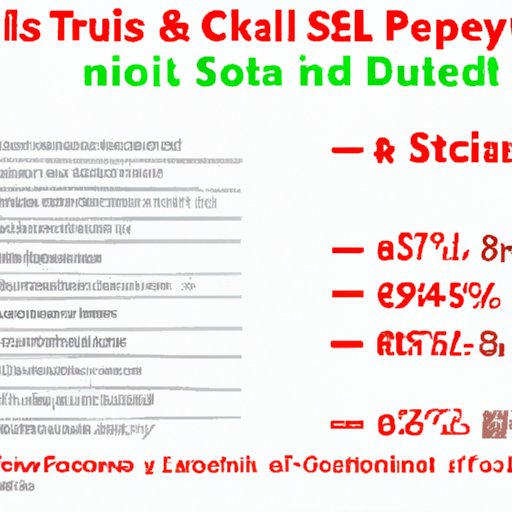
I. Introduction
If you’re using Excel to manage your data, chances are you’ll need to calculate percentages at some point. Whether you’re working with sales figures, grades, or any other kind of data, percentage calculations are an essential part of data analysis. However, for those new to Excel, calculating percentages can be a daunting task.
In this guide, we’ll walk you through how to calculate percentages in Excel step-by-step. We’ll also cover some tips and tricks for making the process easier, as well as a case study to help you apply what you’ve learned. By the end of this guide, you’ll have all the knowledge you need to master percentage calculations in Excel.
II. A Step-By-Step Guide
The basic formula for calculating a percentage in Excel is simple: divide the number you want to find the percentage of by the total value, and then multiply the result by 100. Here’s the formula in more detail:
[number you want to find the percentage of] / [total value] * 100 = [percentage]
Let’s say, for example, that you want to find what percentage of your sales for the month came from a specific product line. You have the following data:
– Total sales for the month: $10,000
– Sales for the specific product line: $2,000
To find the percentage of sales that came from the specific product line, you would use the following formula:
=2000/10000*100
This gives you a result of 20%, indicating that 20% of your sales for the month came from the specific product line.
III. A Case Study
Let’s take a look at a real-life scenario to see how to apply these steps in practice. Suppose you run a tutoring company and want to calculate how many of your students have received A grades in their latest exams. You have the following data:
– Total number of students: 50
– Number of students who received A grades: 15
To calculate the percentage of students who received A grades, you would use the following formula:
=15/50*100
This gives you a result of 30%, indicating that 30% of your students received A grades on their latest exams.
IV. A Video Tutorial
If you’re someone who prefers visual aids, you may find it helpful to watch a video tutorial. In this video, we’ll walk you through the basic formula for calculating percentages in Excel and show you how to apply it to different scenarios:
V. An FAQ
Here are some common questions and concerns people have about calculating percentages in Excel:
1. Can I use the percentage symbol (%) in my formulas?
Yes, you can. Instead of multiplying by 100, you can simply add the percentage symbol at the end of your formula. For example, the formula we used in the case study could also be written as follows:
=15/50%
2. What’s the difference between a percentage and a decimal?
A percentage is a number expressed as a fraction of 100, while a decimal is a fraction of 1. For example, 50% is equal to 0.5 in decimal form.
3. Can I use pre-made percentage formulas in Excel?
Yes, Excel has several built-in functions for calculating percentages, including the Percentile function and the PercentRank function.
VI. A Tips and Tricks Guide
Here are some advanced techniques and shortcuts for calculating percentages in Excel:
1. Use conditional formatting to automatically highlight cells that have reached a certain percentage threshold.
2. Use the SUMPRODUCT function to find the total number of values that meet certain percentage criteria.
3. Use the AVERAGE function to find the average percentage across a range of values.
VII. Conclusion
Calculating percentages in Excel is a critical skill for anyone who works with data. With the basic formula and our step-by-step guide, you’ll be able to calculate percentages easily and accurately. Remember to practice and explore on your own to get better at percentage calculations and try applying the tips and tricks we’ve mentioned to streamline your work.




